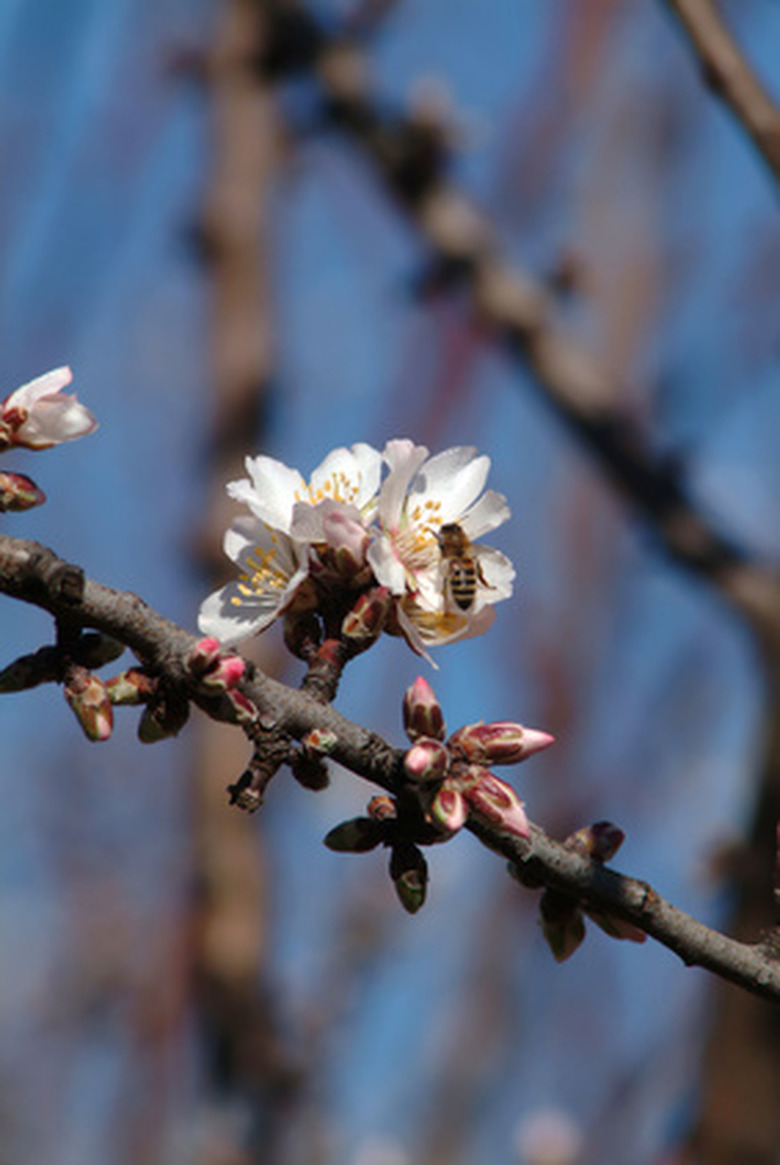Soil Requirements For Almond Trees
According to University of California, Davis, almond trees are deciduous trees which are a part of the rose family. They have been grown by humans for thousands of years and do best in Mediterranean climates. Arbor Day, the tree foundation, states that most almond trees grow well in USDA Hardiness Zones 5 through 8 and reach heights of 20 feet with a 15 feet spread. Almond trees require the proper type of soil to grow well.
Well-Drained
The most important soil requirement for almond trees is that the soil is well drained, according to the University of California, Davis. Almond trees do not like wet feet and their roots will rot in the ground if the soil does not drain properly. The UC Davis farm advisor, Mario Viveros, suggests that to ensure proper drainage in your soil you break up any compacted soil and mix in compost to a depth of 1 to 2 feet.
- According to University of California, Davis, almond trees are deciduous trees which are a part of the rose family.
- The UC Davis farm advisor, Mario Viveros, suggests that to ensure proper drainage in your soil you break up any compacted soil and mix in compost to a depth of 1 to 2 feet.
Loam
While almond trees will grow in clay, sandy and silty soils, they do best in rich loam, according to Viveros. If your soil is not loamy, you can create loam out of your own garden soil. Add compost or aged manure and work it into the soil to a depth of 1 to 2 feet. Add mulch on top of the soil, allowing it to decay and enrich the soil as it breaks down.
Neutral to Alkaline pH
Almond trees prefer a neutral to alkaline pH. Test your soil's pH before you plant and amend your soil. The "Almond Production Manual" advises that if your soil is acidic adding lime will neutralize the soil over time.
- While almond trees will grow in clay, sandy and silty soils, they do best in rich loam, according to Viveros.
- Almond trees prefer a neutral to alkaline pH.
- Test your soil's pH before you plant and amend your soil.
Care Of Almond Trees
Plant almond trees in well-draining soil with at least 5 feet of topsoil. The soil can be mounded to create the proper depth. The trees will grow best in soil with a pH of around 6.5, although they will tolerate acidic, neutral and alkaline pH levels. Paint the south side of the trunk and large branches with whitewash to protect the tree from sunscald if the sun is too hot. Adjust watering as necessary to avoid drowning the roots or allowing the soil to dry out. Fertilize twice a year in the spring, before new growth appears, and again in the early fall. Use 1 cup of 10-10-10 fertilizer per year of tree age, with a maximum of 10 cups, in the spring application.
- Plant almond trees in well-draining soil with at least 5 feet of topsoil.
- Paint the south side of the trunk and large branches with whitewash to protect the tree from sunscald if the sun is too hot.
References
- UC Davis: Almond Trees
- Arbor Day Foundation: Almond, Hall's Hardy Prunus dulcis
- "Almond Production Manual;" Warren Micke; 1996
- Missouri Botanical Garden: Prunus Dulcis
- Arbor Day Foundation: Almond, Hall's Hardy
- Fruit Crops: Almond – Prunus Dulcis
- Plants for a Future: Prunus Dulcis
- University of California Cooperative Extension: Fruit Trees — Planting and Care of Young Trees
- Clemson Cooperative Extension: Peaches & Nectarines
- Clemson Cooperative Extension: Pruning Peaches & Nectarines
